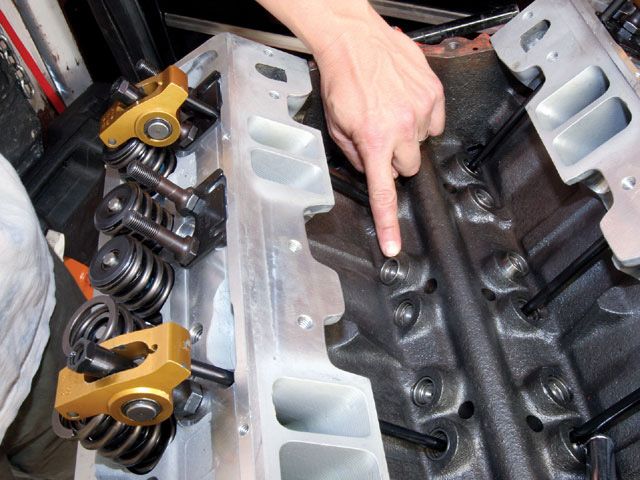
Under a tree, in a remote corner of the earth, there is a guy adjusting his hydraulic valve lash with the valve cover off and the engine running. Yes, it's true. We've seen it. Proof is that you can buy valve covers with the tops cut off so that very same guy won't get oil sprayed all over his headers and T-shirt. At the same time, dyno shops and engine builders are sending engines out into the world with the valve lash pre-adjusted. So what gives? How is it done? We will show you.
Cold Engine Basics
Valve lash is simply the clearance between the tip of the valve and the tip of the rocker arm. Too much lash causes noise and potential valvetrain damage and too little can potentially cause the valve to stay open when it should be closed or to bottom out on the lifter.
To adjust valve lash, be it with a hydraulic or mechanical cam, you need to have the lifter on the heel or base circle of the camshaft lobe. To get there, use the exhaust opening and intake closing method (EO/IC). The lifters do not need to be primed, or otherwise force fed with oil, but some engine builders will soak lifters before engine assembly. Just be sure to use plenty of cam lube on the lifters before you get started.
Starting with cylinder No. 1 (usually the head that is farthest forward on the block is No. 1) with the valve cover off, rotate the engine until the exhaust lifter begins to move upward. This is the point at which the exhaust valve is opening (EO), meaning the piston is through with the power stroke, and it's about to begin the exhaust stroke. At this point, the intake valve is closed and the lifter is on the base circle of the camshaft and can be adjusted. To adjust lash with hydraulic lifters, simply grab the pushrod and back off the rocker-arm adjusting nut until you feel play between the pushrod and the rocker arm. Turn the rocker arm adjusting nut while rotating the pushrod until there is no more play between the pushrod and the rocker arm, then tighten the adjusting nut one half turn. That's it, you're done. To adjust the exhaust lash, turn the engine over until the exhaust valve has completed its lift cycle and the intake valve begins to close (IC). Now, the exhaust lifter is on the base circle because the piston is finishing the intake stroke and about to begin compression. Set the lash on the exhaust valve and you're done. This needs to be done for each cylinder.
Hot Lash Gone Cold
So that covers hydraulic lifters, but what about the mechanical lifter? The big difference is that mechanical lifters call for a hot lash adjustment between the valve tip and the rocker arm. The overall method is the same (EO/IC) in terms of cam timing, but the adjustment at the rocker arm nut is not. The ideal is to warm the engine and set lash using a feeler gauge at the rocker tip, but what if you have a new engine? Speaking with a couple of dyno shops, we found that with a small-block with aluminum heads and a mechanical camshaft, the lash can be set 0.003-0.004 tighter than the cam card calls for. Big-blocks with aluminum heads can be 0.005, and all-aluminum blocks and heads as much as 0.010-0.012. The reason is that when the heads get hot, they expand and outgrow the pushrod and increase the lash. Once the valves are set, you can safely run the engine to operating temperature and readjust the clearances.